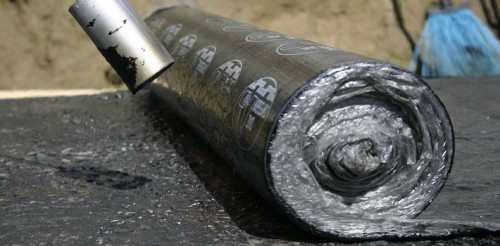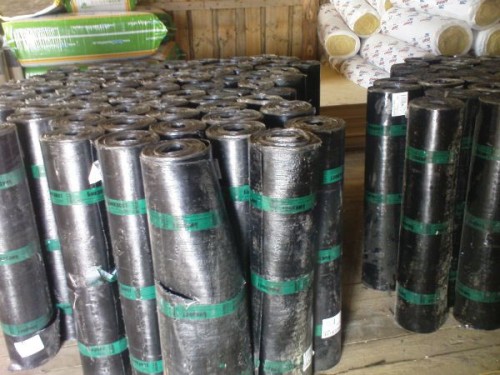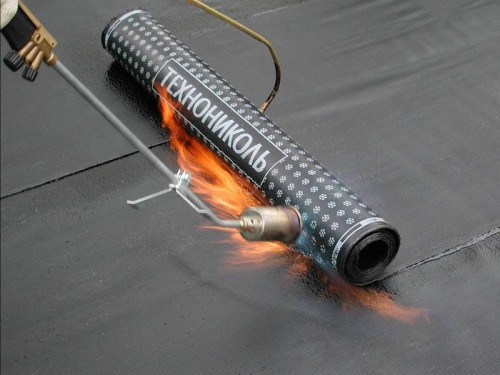
Biket: Characteristics and Styling Technology Building materials

If you are looking for a reliable roofing coating, which would not serve for one year and did not make a "hole" in your wallet, we recommend paying attention to the Rubrost. This material is characterized by excellent performance, it is relatively inexpensive, it is easy to work with it even without construction experience. About the fact that the material of the bikrost and how to lay it, read in this article.
General characteristics
Bicrost is ideal for waterproofing roofs with a small angle of inclination. It will ensure the unobstructed water flow from the surface and will not allow it to leak inside, disturbing the integrity of the building.
The bicrost material is a special form of a runneroid, consisting of a dense layer of fiberglass, polyester or glass cholester. On both sides of one of these materials caused a bitumen composition. A similar combination of layers allows the use of bicrost almost on all types of roof. In addition, it can be used both for roofing "from scratch" and for cosmetic or overhaul of the old roof.
A bicrost is produced in large rolls with different amounts of routing meters. Its main advantage is that with decent capacity it refers to the building materials of the economy class, which allows it to use it everywhere (house, garages, warehouses, etc.).
Basic performance of the biket:
- the high level of strength does not allow the material to break even under strong pressure;
- ensuring reliable protection against aggressive environmental impact, including the chemical exposure of the soil;
- good resistance to soil and sedimentary waters;
- low cost;
- long service life (from 5 to 15 years, depending on the type and manufacturer);
- easy installation - Biket laying can be carried out alone or with a partner and takes a minimum of time even on large areas;
- the versatility of the material - bikrost is equally well for both residential and production needs. It is used for the device of roofing pie, waterproofing of various types of foundations, for vertical waterproofing, arrangement of underground and ground garages.
Despite such popularity and versatility, the bikrost is mainly used in low-budget construction. They resist the roofs of garages, roofs of small private houses, cottages, sheds or warehouses. It is recommended to refrain from the use of bicrost in places with severe solar activity, since it can melt and lose its protective properties.
Types of bikrost.
As mentioned above, the bikrost may consist of various materials, and only the rubberoid shell remains unchanged. So, depending on the "filling" distinguish several types of bijrost. Each of them is characterized by its operational features and appointment.
The following types of bike are distinguished:
- HPP is the easiest and cheapest view of the biker. It consists of glass cholester, which causes a bitumen composition with strengthening components. On both sides, the material is covered with a protective film from polyethylene. As a rule, this species is used for waterproofing when laying a new roof.
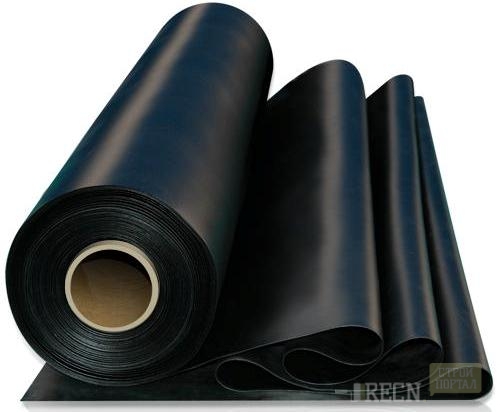
- HCP - this species also contains a glass chicast. The difference is that the bottom lining layer is protected by a polyethylene film, on top of which a crumb of crushed slate or granulate is applied. Thanks to this sprinkling, the strength of the material on the gap increases and its ability to protect the room from ultraviolet radiation increases.
- CCP - This type of bicrost is used to lay the lower roofing layer in the complex with the top layer of the HCP or TCP. The material is based on fiberglass, on both the side it is covered with a protective polyethylene film.
- TKP - bikrost, which is based on fiberglass. The outer bitumen layer contains the sprinkling of shallow shale crumb, the lower layer of the rubberoid is protected by a plastic film. Thanks to this combination, this type of biket can be used even on inversion roofs. Its characteristics are much better than that of the bicrost based on the glass cholester. TKP is used mainly for laying upper roofing layers.
- EPP and ECP are similar to the materials based on polyester. These types perfectly demonstrate their protective qualities when working with an uneven surface, creating a single level layer and providing additional waterproofing.
To decrypt these abbreviations is very simple - the second letter means the material that was used as the upper or lower layer. The top (outer) layer is distinguished by the presence of coarse-grained mineral crumbs, due to which the protective properties of the biket are improved and its resistance to aggressive effects of the external environment. The lower or lining layer is represented as a fine-grained or smooth elastic surface. Today, fiber-based species are most popular.
Store bikrost is recommended at a temperature of from + 15c in a dry room, putting in a vertical position. When transporting, you can put the rolls horizontally, provided that the height will be not more than 5 rows.
The price of bikrost depends on the type and destination (roofing or lining). The roofing material is more expensive than the lining, because it has better protective qualities and does not need to use additional layers of protective materials.
Technology laying
Bike styling is carried out exclusively on the Nazare prepared surface. Preparation consists in cleaning the cement-concrete screed from dust, dirt, fallen leaves and other garbage. Otherwise, the bikrost will lie unevenly and much earlier will be in disrepair. The humidity of the surface at the time of laying also plays an important role. With a bike, you can not work in the rain or snow. The surface humidity should be not more than 4%, so even if the rain is already over, it is necessary to wait for drying the screed.
If you want to repair the biker with the old roof, the preparatory work is to remove the old roofing carpet and the seal of all the joints and cracks. It will take much more time, but will save money.
How to lay a bicircuit with your own hands is described in this manual:
- When you cleaned a cement-concrete tie from garbage, it is necessary to carry out another preparatory stage - cover the surface with a special composition. These primer compositions are known as primers and serve for better combustion of the biket with the surface of the roof. Primers can be bought in the same company as bikrost, and can be prepared independently, mixing the BNK 90/30 bn, BN 90/30 or BN70 / 30 with solvent (nephrase or gasoline) in proportion 1/3. Also for the manufacture of primers it is allowed to use bitumen mastics with heat resistance not less than 80c. Apply primer with a rigid flat brush or brush. Be sure to wait for a complete drying of the composition. To check, spend on the surface with a clean dry cloth - if it remains clean, then you can begin to directly laying the bike.
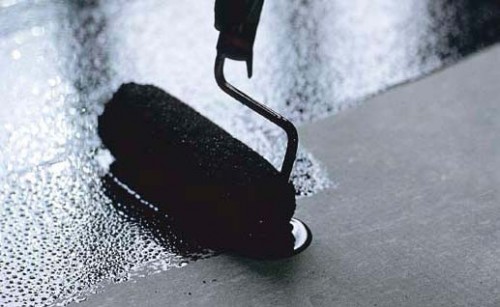
- Roll off the roll and extrude the necessary back.
- Roll roll to the middle of two sides.
- Heat it with a gas burner and start gently deploying, rolling the rink. First roll one side, then go back and start the second part of the roll. So you can put the bikrost as uniform and economically as possible.
- If the layer is heated with a burner correctly, there should be a small bitumen subcle on the junction.
- When you roll a preheated cloth, follow the wrinkles, dents or folds. If you at least once in my life glued wallpaper, then act on the exact same principle - smooth the material from the center to the edges, eliminating all irregularities.
- In places of adjoins, it is necessary to stick a bicrost in two layers to enhance the roof. To do this, cut a piece of 40 cm from the bottom layer of the roof. If you work with a vertical surface - 25 cm, if with a horizontal - 15 cm. Boil the burner vertical part, and then the one that will be glued horizontally. When to put the top layer of the roof, repeat the same actions, only with a horizontal edge of 25 cm.
On this video describes in detail the work with the adjoits:
Useful tips:
- Roll off the rolls across, making a small backstage of 8-10 cm. In the ends of the backlet should not exceed 15 cm. Displays the ends in different rows relative to each other, so as not to create a single joint line over the entire surface.
- Stelite the material from below-up.
- In no case do not go according to freshly plane material. Otherwise, dents from traces will remain, and the waterproofing properties of the biket will be disturbed.




